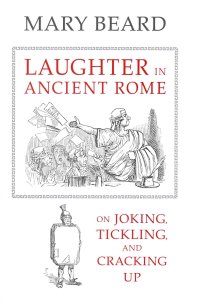Jokes have a double reputation. If many people consider them the heritage of a long gone sense of humor, other ones underline their historical and popular value, like any form of culture passed down orally, a sort of collective patrimony made of folk songs, proverbs, traditions, maxims and principles. It’s impossible to backtrack the source, it’s maybe pointless.
The word “joke” comes from the Latin term jocus, that means jest, wordplay. According to a study conducted by the University of Wolverhampton, United Kingdom, and led by the professor of Literature and humor expert Paul McDonald, the oldest certified joke is Sumerian and dates back around 1900 b.C. Anyway, it seems that telling funny stories was a common practice among the populations of that area – and not only.

Since IV-V century a.D. we know about the Philogelos, from the ancient Greek “lovers of the laugh”, the first jokes collection we have trace. Like in theater, the narrative structure used typical characters – intellectuals, lazy, grumpy, envious, jealous, inhabitants of rival towns.
Ancient Greeks and Romans already had an adversarial relationship with jokes. Aristotle recommended a balance in laughter, to avoid lapsing into degeneration. He wasn’t totally hostile, though, The Name of the Rose basically turns around this dualism. While the French historian George Minois wrote that outside Heracles’ sanctuary, near Athens, a group of comedians called “the Sixty”. They were people of high social background that always started their stories with “the Sixty says that…”.
Also in Rome a healthy balance was demanded. According to the British academic and writer Mary Beard, humor was a basic aspect of the society of that times, involving even the emperors. But, as the Romans said, “riso abundat in ore stoltorum”, (“laughter abounds in the mouth of fools”).

If in the Middle Ages jokes are down in popularity – see The Name of the Rose… again – during the Renaissance there is a backfire. Poggio Bracciolini, historian, humanist, and papal secretary, in the mid-fifteenth century published the volume Facetiae (another Latin word for “joke”), the first European collection of its kind. Its circulation remained limited to an inner circle, as it was in Latin, not understandable anymore by the masses. Thanks to this, however, Bracciolini’s work avoided the Church censorship.
Since the diaspora, the Jews went all over Europe, carrying their humorous tradition summed up in the German term “witz”. Made of self-irony and a lot of catharsis, this heritage survived the persecutions and all the attempts of assimilation.
Jokes didn’t spare even the most ferocious dictators, like Mussolini, Hitler or Stalin, showing their adaptability to contemporary times while keeping fixed structures and frameworks.
If jokes are (also) the gauge of a certain population in time – maybe that’s a reason why they don’t always age well – then it must be the turn of artificial intelligence. This started to replace humans in many heavy tasks, but we are still questioning if they can do it for intellectual activities too. Robots can already write news articles, let’s see what will happen with editorials, for example.

In the meantime, the American researcher Janelle Shane is trying to teach humor to neutral nets. The difficulty is shaping an artificial mind in order to be flexible enough to understand the illogical and surreal mechanism of jokes, which goes in the opposite direction of regular artificial intelligence, programmed to follow rationality and consistency, not paradoxes.
For now, we can only rely on our gray matter and on the studies conducted by the British anthropologist, sociologist and psychologist Gregory Bateson, who basically claimed that when these kinds of paradoxes occur, we laugh or cry, we create art or religion… or we become schizophrenic.


































